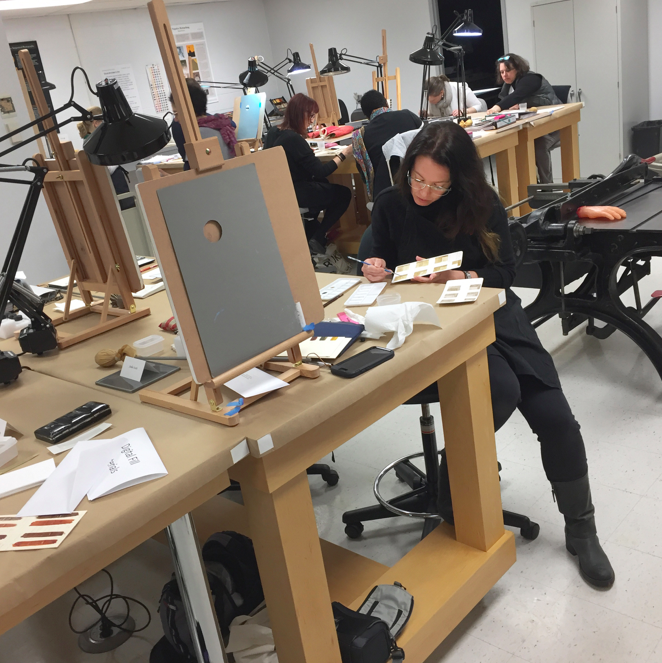The Compensation for Loss in the Conservation of Photographic Materials workshop was held by the Foundation for the American Institute of Conservation at (the pilgrimage of choice for any photograph conservator) the George Eastman Museum, Rochester NY, April 2018. For what one would think to be a very concise topic the week was compact and we were an ambitious and hard working class of 15 from North America and Australia determined to try tasks set by James Bernstein, Victoria Binder and Debra Evens. The difficulty and complexity of infilling and inpainting losses for these most multifarious of cultural materials was repeatedly acknowledged and indeed compounded by the wide range of materials, tools and techniques available to us.

The week included lectures by James and guest speaker Nora Kennedy on topics such as preparing the studio space with appropriate base colours and lighting. Nomenclature was discussed; as ‘retouching’ often refers to the creators intentional change of a negative or print, the conservation aspect must be referred to as ‘inpainting’ or ‘loss compensation’. We further deliberated on this whilst viewing a stunning array of photographs from the Eastman Museum collection. Victoria presented a practical lecture on how to use Photoshop to create infills for large losses and a session followed to allow us to practice attaching the modern ink jet paper to a silver gelatine print. Other lectures included colour theory, pigments vs dyes, light transmission, and practical advice on selecting binders and separation layer materials.

It was in the practical sessions where the real action was at. Delegates had, what can only be described as, a smorgasbord of materials and tools with which to experiment. Under strict instruction to leave all ethics at the door, we were able to play, test and experience materials which traditionally have not been used in photograph conservation. To infill loses we were invited to try melted wax with a Tjanting, (used in Batik craft), Flügger, (ceramics), Kaolin and micro glass balloons. More familiar materials were cellulose powder, Japanese paper fibres, methyl cellulose and gelatine. The use of synthetic ox gall and dry water to control application was also discussed.
The colour was intense and inviting; the conservation studio was lined with products to try (truly Willy-Wonka-esque). There were Kodak dye sheets, gouache, pastels, watercolour and acrylic plus QoR colours, tinted Lascaux, Gamblin palettes and pigments ready to be ground with added binder. We were encouraged to inpaint at an easel with our personally made mahlstick. Obtaining the best sheen for our inpainting was a recurrent experiment during the week. As we would be challenged in real life conservation practice, selecting the right materials for the specific job such as infilling, colour product selection, gloss and burnishing were all considered for experiments on photographic prints provided. James would remind us through the practical sessions to build with thin layers and not push the treatment too far, quoting a beloved professor ‘Remember: Better is the Enemy of Good’.

And as for the magic bullet? Well, as conservators, we know there is no real magic trick to help us with our work. Materials must always be carefully selected to suit the specific job, but do try adding a touch of titanium orange to your colour palette when next inpainting a photograph… somehow, it works!
Thanks go to Artlab Australia for financial support to attend this workshop. Many thanks also go to Taina Meller, the George Eastman Museum and the FAIC for hosting the week. Please contact myself, Pip Morrison, (NGV), or Katy Glen, (SLV & The Grimwade Centre), for access to copious notes we were provided. Stay tuned in November when more detailed tips, tools and techniques will be presented at the AICCM Book and Paper Group Symposium.